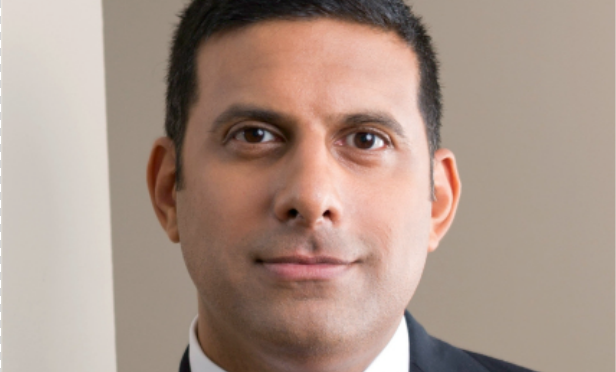Interest rates are likely going to rise another four to five times through early 2020 as the Federal Reserve reaches its targets, according to Sam Chandan of Chandan Economics. The good news: the Fed's plan to tighten monetary policy is at its halfway point and we can expect continued caution from the Fed as they slowly increase rates.
“My expectation is that we will see another rate increase at the December meeting and a series of rate increases in 2019 and early 2020 after which time the Fed will have reached its targets,” Chandan, the founder of Chandan Economics, a Dean at NYU SPSSchack Institute of Real Estate and a partner at CapriCapital, tells GlobeSt.com. “We are past the halfway point in terms of the Fed tightening its monetary policy in the United States. Between now and 2020, including December 2018, we expect to see four or five more rate increases.”
This is an unusual cycle in that it has been one of the longest recoveries in history and interest rates have remained at historic lows for years. The Fed is inching rates up slowly—but the economy is strong and can withstand and absorb the higher rates without impacting market activity. “By any historic norm, the Fed has moved in a cautious way in its approach to rate increases, and I think this has reflected the depth and the scope of the financial crisis and a degree of uncertainty regarding the path to growth,” says Chandan. “What has allowed for monetary policy to remain accommodative for an extended period of time has been the absence of inflationary pressures, even as the labor market has tightened. The Fed has moved cautiously out of concern for the resilience of the economy expansion. Now, the Fed believes that the expansion is resilient and that the economy can withstand and absorb the rate increases. At the same time, they have not been under pressure to raise rates because of significant price stability.”
The Fed is also preparing monetary policy for the next recessionary period. With rates so low, there is little ways for the Fed to respond in the event of another recession, and some believe one is on the horizon. “There are broad concerns around the longevity of the business cycle, and while none of us will go so far as to put a date on that next inflection, the likelihood that we will see an inflection in the next 24 to 36 months is increasing,” says Chandan. “That is captured or reflected in the Fed's expectation that growth will slow. Privately, I think that many of the voting members of the FOMC believe that during that timeframe, we will actually see a mild recession. They want to rebuild the flexibility in monetary policy before that happens.”
Rising interest rates, however, won't bring about the end of the cycle earlier or have a significant impact on investment activity, especially considering that interest rates remain at historic lows. “The increases will materially impact our outlook for the next inflection,” adds Chandan. “My model estimates of when we will experience that next inflection are not sensitive to a 25 or basis point increase in the Fed fund's target. While the Federal Reserve has raised rates at the short end of the yield curve, when we look at the long-end of the yield curve, it has flattened considerably. The increases in the Fed fund's target have only exerted a limited influence over long-term rates. When we look at the 10-year Treasury, it is not increased in a way that is comparable to what we see the Fed doing at the short-end of the yield curve.”
Chandan will speak on this topic further at the Trigild Lender Conference in San Diego October 17 to 19.
© Touchpoint Markets, All Rights Reserved. Request academic re-use from www.copyright.com. All other uses, submit a request to [email protected]. For more inforrmation visit Asset & Logo Licensing.







